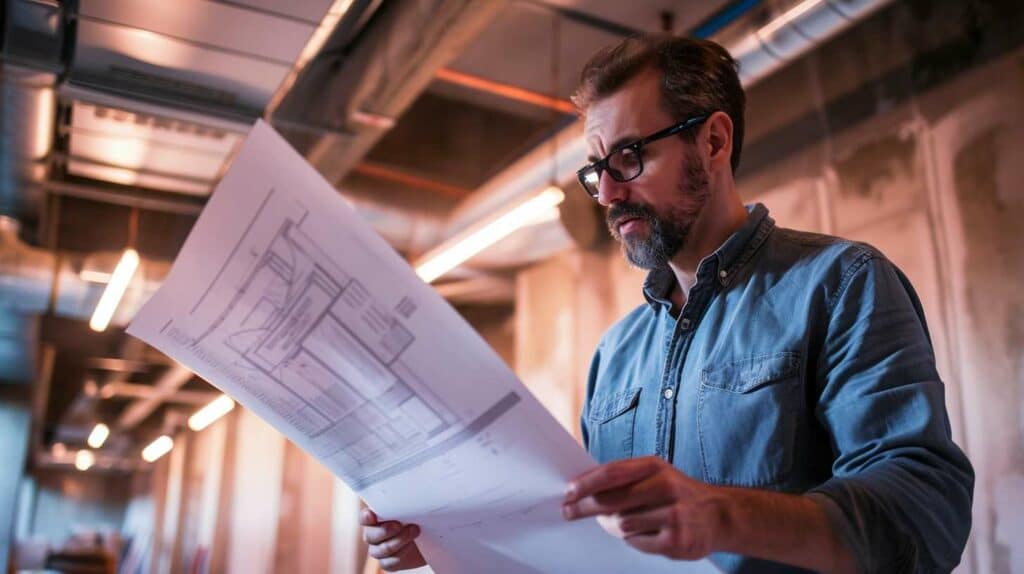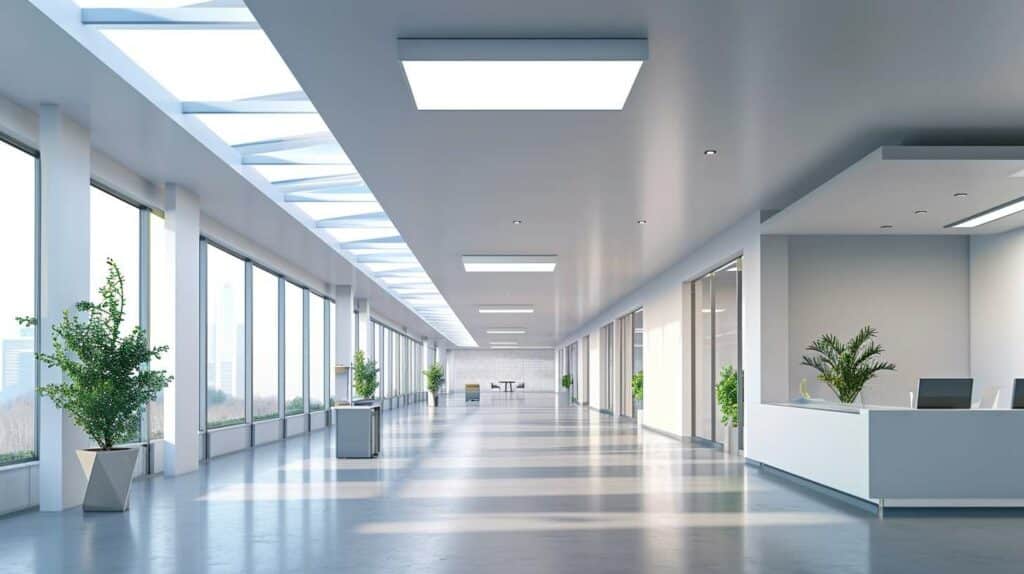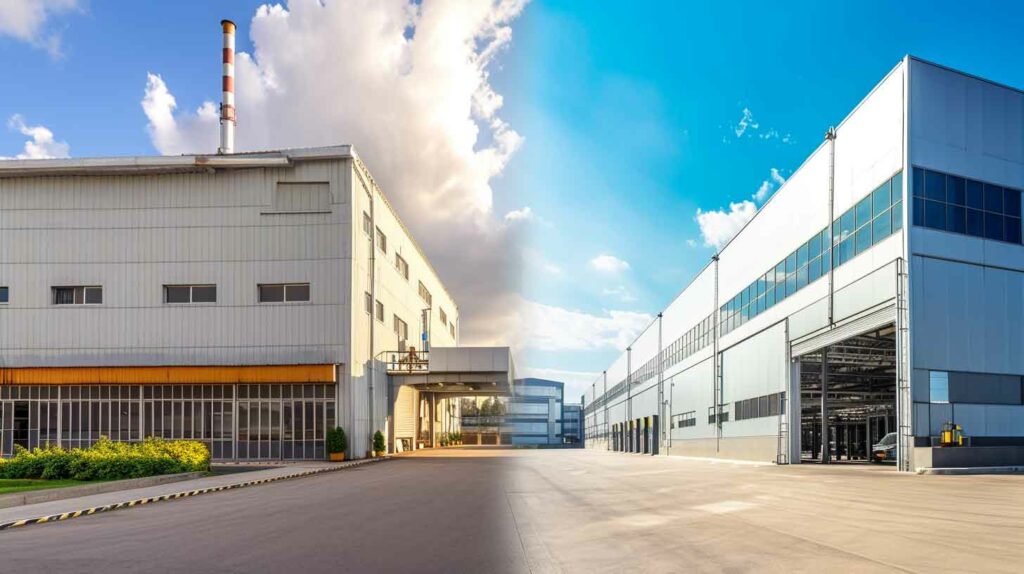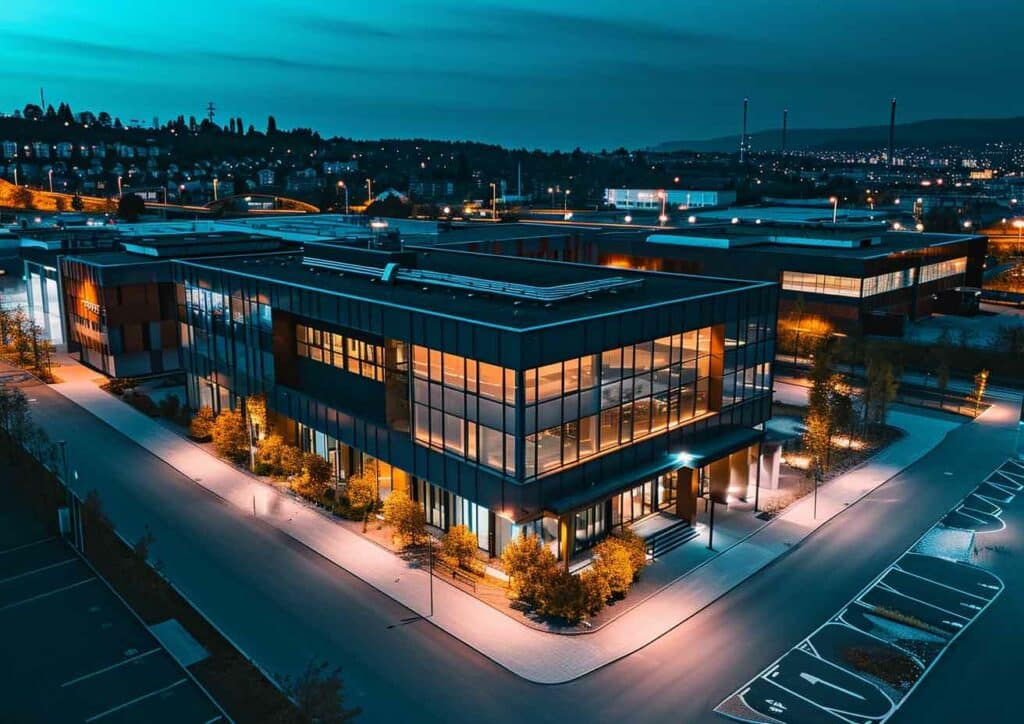In today’s fast-paced economic climate, energy efficiency has emerged as a linchpin for the commercial and industrial sectors. Energy retrofits represent a critical step towards reducing environmental impact and achieving substantial financial savings. The significance of retrofitting commercial and industrial spaces must be addressed, with these environments often being intensive energy consumers.
Current data indicates that commercial buildings consume nearly 20% of the nation’s energy, which can be considerably reduced with effective retrofit measures. According to the U.S. Department of Energy, these upgrades offer potential savings that can amount to a 30-50% reduction in energy costs. This article unravels the unique aspects, practical examples, and cost-effectiveness of energy retrofit solutions tailored for commercial and industrial applications.
Commercial Energy Retrofit Fundamentals
Commercial energy retrofits encompass a broad spectrum of upgrades and improvements designed to enhance the energy efficiency of building systems. These modifications differ from residential retrofits due to commercial facilities’ scale, energy usage patterns, and operational complexity.
What are some examples of commercial energy retrofit solutions?

Commercial retrofit solutions are as varied as the buildings they serve, each tailored to meet specific energy goals. Some key examples include
- LED Lighting Upgrades: Transitioning to LED lighting from traditional lighting systems can significantly reduce energy consumption and costs.
- High-Efficiency HVAC Systems: Replacing outdated HVAC systems with modern, more efficient units to provide better temperature control and reduce energy use.
- Building Automation Systems (BAS): Implementing BAS for real-time monitoring and control over building systems to maximize efficiency.
- Insulation and Envelope Improvements: Enhancing the building’s envelope with improved insulation, windows, and seals to reduce heating and cooling demands.
- Demand Control Ventilation: Using sensors and controls to adjust airflow based on the occupancy, thus saving on unnecessary heating or cooling.
- Solar Panel Installations: Integrating photovoltaic panels to harness solar energy, thereby reducing dependence on traditional energy sources.
Assessing Cost-Effectiveness in Commercial Retrofits
For businesses considering energy retrofits, the key question often revolves around their return on investment and whether these solutions are cost-effective in the long run.
Are commercial energy retrofit solutions cost-effective?
A comprehensive analysis of costs versus savings is crucial to determine the cost-effectiveness of retrofit solutions. The following points are essential for this financial evaluation:
- Initial Investment: Considering the upfront costs of retrofitting, which includes the price of materials, equipment, and installation.
- Significant Energy Savings: Calculating the reduction in energy bills post-retrofit directly correlates to the efficiency of the implemented solutions.
- Operational Savings: Assessing the decrease in maintenance and operating costs due to installing newer, more reliable technologies.
- Incentives and Rebates: Accounting for financial incentives such as tax credits, rebates, and grants that can offset the initial investment.
- Payback Periods: Estimating the time it will take for the energy savings to cover the initial costs of the retrofit measures.
Graphical representations of data can provide businesses with a clear picture of potential energy savings over time. For example, a bar graph depicting the reduction in energy costs year over year post-retrofit can be a compelling visual aid for decision-makers. Similarly, line graphs illustrating the shortening payback periods as energy prices rise can reinforce the financial benefits of retrofits.
In conclusion, while the initial investment of a commercial energy retrofit can be significant, the long-term savings, operational efficiencies, and environmental benefits often result in a compelling case for their cost-effectiveness. Businesses are encouraged to conduct a detailed analysis, considering their specific building characteristics and energy goals, to ensure the best financial decision for their retrofit projects.
Financial Incentives for Commercial Retrofits
Investing in energy efficiency through commercial retrofits can be financially beneficial, not just through energy savings but also via various fiscal incentives. Governments and utility companies often offer incentives to encourage commercial entities to reduce their energy use and carbon footprint.
What are the financial incentives for commercial energy retrofit solutions?

There is a comprehensive list of financial incentives available to businesses seeking to implement energy retrofit solutions:
- Tax Credits: A direct reduction in tax liability for certain energy-efficient upgrades. For example, the federal government offers a tax credit for installing energy-efficient systems.
- Rebates: Many utility companies provide rebates for businesses that undertake energy-saving measures. These rebates can significantly lower the upfront cost of retrofit projects.
- Grants: Grants are available from government agencies and private foundations to support energy efficiency projects. Unlike loans, grants do not need to be repaid.
- Energy-Efficient Financing Programs: Specialized loans and financing options are available for energy efficiency improvements, which may offer lower interest rates or favorable terms.
- Renewable Energy Certificates (RECs): Businesses that generate renewable energy can sell RECs to utilities and other energy suppliers to meet renewable energy standards or claims.
- Performance Contracts: Energy Service Companies (ESCOs) may offer performance contracts where the company finances and implements retrofits, with the cost paid back through the energy savings achieved over time.
Commercial Retrofit Regulations
Commercial energy retrofits are also subject to various regulations and standards, varying by location and industry. These regulations ensure safety, promote energy efficiency and reduce environmental harm.
What are the regulatory requirements for commercial energy retrofit solutions?
Here’s a summary of industry-specific regulations that typically apply to commercial energy retrofits:
- Building Codes: Local and state building codes may mandate specific energy efficiency standards to be met when retrofitting existing structures.
- Energy Codes: The International Energy Conservation Code (IECC) and ASHRAE standards provide guidelines for the energy efficiency levels of building designs and retrofits.
- Environmental Regulations: The Environmental Protection Agency (EPA) has regulations that may impact retrofits, mainly if hazardous materials are involved or if the retrofit includes installing energy-generating systems.
- Utility Regulations: Utilities may have specific requirements for projects that intend to connect to the grid, mainly if the retrofit includes on-site generation, like solar panels.
Insights on compliance include the need for due diligence in understanding local requirements, which can affect the choice of materials, technologies, and practices used in a retrofit. Staying informed about potential regulatory changes is also crucial; for instance, there is a trend towards stricter energy codes and regulations that incentivize or even mandate the use of renewable energy sources.
Businesses must navigate these regulations carefully to ensure their retrofit projects are compliant and can benefit from available incentives. Engaging with knowledgeable contractors, energy consultants, or legal advisors specializing in energy regulations can prove invaluable.
Selecting the Right Solutions for Commercial Spaces

For commercial building owners and facility managers, selecting the proper energy retrofit solutions is critical to maximizing efficiency gains and return on investment. Making informed decisions requires a nuanced understanding of the property’s needs and potential retrofit impacts.
What are the considerations for selecting commercial energy retrofit solutions?
When choosing retrofit solutions for commercial and industrial buildings, several key factors should be taken into account:
- Building Size and Scale: Larger buildings may benefit more from certain types of retrofits, such as building automation systems, due to the complexity of managing energy use across extensive spaces.
- Usage Patterns: Energy consumption patterns can vary significantly between different commercial spaces. Retail stores, for example, may prioritize lighting and HVAC upgrades, while manufacturing plants might focus on process energy efficiency.
- Occupancy Levels: The number of occupants and their comfort requirements can influence the choice of HVAC and energy-efficient lighting systems.
- Type of Business Operations: The specific energy needs of the business must guide the retrofit strategy. A data center’s retrofit priorities will differ markedly from those of a hotel or a warehouse.
- Energy Audit Results: A thorough energy audit can identify the most energy-intensive areas and systems, providing a roadmap for prioritization of retrofit measures.
- Budget Constraints: The financial resources available for retrofit projects can limit or define the scope of what can be implemented.
- Available Incentives: As discussed previously, financial incentives can affect the energy cost equation and make some retrofit solutions more attractive.
- Future-Proofing: Consider how future technology advancements and regulatory changes impact the long-term viability of the retrofit solutions.
Maintenance of Commercial Retrofit Systems
Successfully implementing retrofit solutions is the first step in a long-term strategy to maintain energy efficiency. Regular maintenance is crucial for ensuring the systems operate at peak performance.
What are the maintenance requirements for commercial energy retrofit solutions?
Maintenance requirements will vary depending on the type of retrofit solution but generally include the following:
- Preventative Maintenance Schedules: Regularly scheduled checks and servicing can prevent breakdowns and extend the life of retrofit equipment.
- System Monitoring: Continuous monitoring, possibly through a building management system, can help detect early signs of issues before they escalate.
- Training: Staff should be trained in properly operating new systems to avoid inefficiencies or damage.
- Best Practices for Longevity: This includes cleaning, adjusting settings, replacing worn components, and following manufacturers’ guidelines for equipment care.
- Documentation: Keeping detailed records of maintenance activities helps track retrofit solutions’ performance and servicing needs.
Retrofitting Historic Commercial Buildings
Retrofitting historic commercial buildings presents a unique set of challenges, balancing the need for modern energy efficiency with preserving historical integrity.
What are the energy retrofit options for historic commercial buildings?
For historic properties, energy retrofit options must be carefully chosen to ensure they do not compromise the building’s architectural character:
- Interior Insulation: Adding insulation internally to avoid altering the exterior facade.
- HVAC Upgrades: Installing high-efficiency systems that can be concealed and do not disturb the historic appearance.
- Window Films: Applying films to windows to improve thermal performance without replacing original glazing.
- LED Lighting: Upgrading to LED lighting for energy savings while maintaining the building’s aesthetic with appropriate fixtures.
- Energy Management Systems: Using smart systems to monitor and control energy use discretely.
- Solar Panels: If appropriate, install solar panels in less visible areas to maintain the building’s historic profile.
When retrofitting historic buildings, it’s often necessary to work with conservationists and local historical societies and possibly adhere to specific regulations designed to preserve historic structures. The goal is to strike a balance between maintaining the historical essence of the building and making necessary improvements to its energy performance.
Market Trends and Opportunities in Commercial Retrofits

The landscape of commercial energy retrofits is rapidly evolving, shaped by technological advancements, regulatory changes, and a growing awareness of sustainability issues. As companies seek to reduce their energy consumption and carbon footprint, the retrofit market is expanding, offering significant opportunities for innovation and growth.
What are the key opportunities for energy retrofit systems manufacturers in the commercial sector?
The commercial sector presents numerous opportunities for manufacturers of energy retrofit systems:
- Intelligent Building Solutions: There is a growing demand for smart building technologies that adapt to usage patterns and optimize energy consumption.
- Sustainability Services: Beyond products, services that provide energy audits, retrofit planning, and sustainability certifications are becoming increasingly popular.
- Integration of Renewable Energy: With the push for green energy, retrofit solutions incorporating solar, wind, and other renewable sources are in high demand.
- IoT and Connectivity: The Internet of Things (IoT) offers a way to enhance building automation and energy management systems, making them more efficient and user-friendly.
Companies like WattLogic are at the forefront of this market, providing clients with advanced retrofit solutions that reduce energy costs and enhance commercial spaces’ functionality and comfort.
Success Stories in Commercial Energy Retrofits
Commercial energy retrofits are essential for reducing operating costs, increasing building value, enhancing occupant comfort, and contributing to environmental sustainability. Across the globe, businesses and property owners are investing in retrofitting projects with remarkable results. Let’s explore some successful examples of commercial energy retrofits through diverse case studies and testimonials from those who have firsthand experience with the transformative power of these projects.
What are the examples of commercial energy retrofits?
Commercial energy retrofits can vary significantly in scope and scale. Still, they generally include upgrades to heating, ventilation, and air conditioning (HVAC) systems, installation of energy-efficient lighting, improved insulation and window fittings, and the integration of renewable energy sources such as solar panels or wind turbines. Here are a few examples that have set the standard for energy efficiency and operational excellence:
- The Empire State Building, New York: Perhaps one of the most iconic retrofit projects, the Empire State Building underwent a comprehensive retrofit completed in 2010. The project included refurbishing all 6,514 windows, installing insulation behind radiators, and upgrading the building’s HVAC system. As a result, the building achieved an impressive 40% reduction in energy use, translating to annual savings of about $4 million.
- The Bullitt Center, Seattle: Dubbed the “greenest commercial building in the world,” the Bullitt Center is a six-story office building designed to be completely self-sufficient. It features a solar panel array that generates more energy than the building uses, a rainwater collection system, composting toilets, and an automated window system that adjusts to external temperatures to save on heating and cooling.
- Salesforce Tower, San Francisco: Salesforce Tower is another notable example, where an advanced air distribution system was installed along with LED lighting and intelligent building systems that adjust energy use based on occupancy. This has cut costs and created a healthier and more comfortable environment for occupants.
Conclusion
Energy retrofits are critical in advancing the commercial and industrial sectors toward a more sustainable and cost-efficient future. WattLogic has established itself as a leader in providing innovative retrofit solutions, helping clients navigate the complexities of energy efficiency projects.
For business owners and facility managers looking to capitalize on the opportunities presented by energy retrofits, the first step is to reach out to experts in the field, such as WattLogic. With a professional energy audit or consultation, WattLogic can help unlock your property’s potential savings and sustainability benefits.
Schedule a consultation today, and start your journey towards a more energy-efficient and sustainable future.




